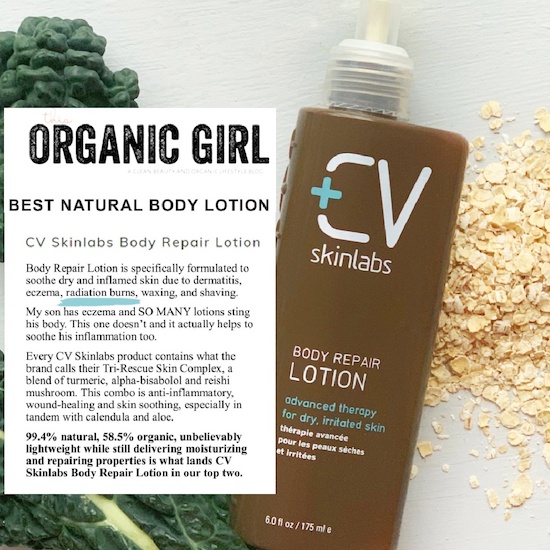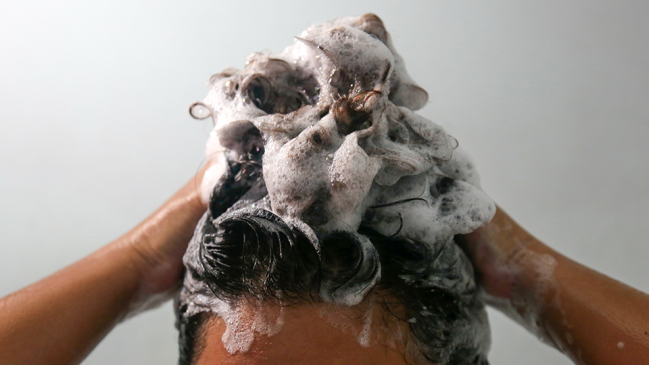If you’ve noticed a skin rash kids cancer treatments can cause, try not to panic. Cancer and many of its treatments are harsh on the skin.
The good news is that consistent and caring skin care routines can make your child more comfortable and lower the chances of small problems turning into infections when their immune systems are weak.
Skin Rash Kids Cancer: What Causes It and Why It Happens
We may think of children’s skin as being the same as adults’ skin, just smaller. But actually, a child’s skin is structurally different. The outer barrier is still maturing and tends to lose water more easily than adult skin, making it more vulnerable to irritation and dryness. Reviews of skin physiology show this, demonstrating that higher transepidermal water loss and a less robust barrier are common in early life.
You can imagine your child’s skin like a protective wall made of millions of tiny bricks (skin cells). Normally, these bricks are consistently replaced as old ones fall away and new ones take their place. Radiation and chemotherapy can damage these cells, disrupting this natural renewal process. The wall becomes weaker, thinner, and more vulnerable to damage.
Radiation Therapy
Radiation targets cancer cells, damaging and killing them, but it can also cause significant changes to the treated skin area. The skin can turn red, dry, and even develop a sunburn-like reaction, followed by peeling. The U.S. National Cancer Institute (NCI) outlines these changes clearly, including “moist” peeling that can get infected if it’s not protected.
The Memorial Sloan Kettering Cancer Center recommends cleansing daily, moisturizing regularly, avoiding harsh products, and protecting the area from heat/cold and friction. We have some more recommendations and tips below to make sure that skin is soothed, comforted, and protected with gentle care and no harmful or irritating ingredients.
Chemotherapy
This treatment targets fast-growing cells, which is great for killing cancer, but also affects those cells that make up the skin, hair, and nails. The skin may turn itchy and peel, it’s likely to be more sensitive to the sun (easier sunburns), and may turn dark in places (hyperpigmentation). Some chemotherapy drugs can cause hand-foot syndrome, with soreness and peeling on the palms and soles of the feet.
Areas that were previously treated with radiation can also “recall” and flare when certain chemotherapy drugs are given. Because chemotherapy continues to disrupt cell turnover and slow wound healing, even small skin injuries can take time to heal.
Targeted Therapies and Immunotherapies
These can also trigger skin problems. Drugs that block the epidermal growth factor receptor (EGFR) can cause an acne-like rash. Some immunotherapies also rev up the immune system throughout the body, which can cause rashes or itching.
Skin Rash Kids Cancer: Why Treating the Skin is About More Than Comfort
For both kids and adults, the skin is the immune system’s first line of defense. A healthy barrier keeps germs out. When that barrier is compromised—cracked, thin, inflamed, or dry—bacteria have an easier way in.
This is important, as when a child is going through cancer, treatments weaken their immune system, making them more vulnerable to illnesses. If they have compromised skin as well, that creates openings where germs can enter the body, further lowering their resistance. Even a small cut or persistent rash can become a serious problem for a child with a compromised immune system.
Healthy skin also helps regulate body temperature and maintain proper fluid balance, both of which are also important for kids whose bodies are already under stress from treatment.
Finally, visible skin changes can affect your child’s emotional well-being. They may affect how your child feels about themselves, especially if they are dealing with other treatment-related changes like hair loss. By taking proactive steps to care for their skin, you’re protecting their physical and emotional health.
Skin Rash Kids Cancer: 10 Home Care Tips
Before changing anything about your child’s skin care routine, it’s best to check with their oncology team, especially during radiation treatments, if the skin is already open, blistered, or infected.
CV Skinlabs was originally created in response to a need for safe, non-toxic, and effective skin care solutions for those with sensitive and compromised skin going thru chemotherapy, radiation treatment and other medically challenged skin issues. Our formulas help support and protect skin during treatments by reducing comfort and relieving dryness, itching, irritation, and inflammation.
1. Create a Gentle Daily Routine
Getting your child into a regular daily skin care routine is one of the best steps you can take, both for their skin care and their future. Teaching good skin care habits now can benefit them later in life. Start with lukewarm water (never hot) and fragrance-free, gentle cream-based cleansers or a natural glycerin soap.
Immediately after cleansing, mist our Rescue + Relief Spray, as it’s perfect for reducing inflammation and cooling red, irritated skin. It helps repair damaged skin and provides instant relief to itching, burning skin, making treatment more tolerable.
Then follow with a nourishing moisturizer like our antioxidant-rich Calming Moisture or Body Repair Lotion, both of which are packed with soothing and wound-healing ingredients that calm inflammation, rashes, irritation, and encourage skin healing and overall comfort.
Make this routine feel special rather than required. You could let your child pick out a soft washcloth, for example, or enjoy talking about their day while caring for their skin.
2. Soothe Itch and Inflammation with Oatmeal, Beta-Glucan and our Tri-Rescue Complex.
Oatmeal lotions and baths (look for “oat extract”, “beta-glucan”, “colloidal oatmeal” on the labels) have documented anti-inflammatory, anti-itch effects and help strengthen the skin’s outer barrier.
CV Skinlabs products are rich in lipids, antioxidants, beta-glucans, and gluten-free oat extract that provide hydration, reduce inflammation and promote skin healing. They create a protective, moisturizing film on the skin that can provide hours of relief.
Beta-glucan is a key component of colloidal oatmeal. It’s well-known for its antioxidant and humectant properties, preventing moisture loss and providing hydration. It helps shield skin from damage, strengthen the skin’s barrier and has calming effects on skin helping to reduce redness and irritation.
Each of our formulas contain our proprietary Tri-Rescue Complex—a blend of turmeric, alpha-bisabolol and reishi mushroom in an aloe emulsion. These ingredients contain potent anti-inflammatory, skin soothing, and antioxidant properties, which combat oxidating stress and reduce inflammatory cytokines, soothing dry, itchy and sensitive skin.
3. Protect from the Sun
Exposure to ultraviolet (UV) rays from the sun can worsen rashes and pigmentation from chemotherapy and targeted therapy and aggravate irradiated skin. Use a broad-spectrum sunscreen (SPF +), reapply every 2 hours when you can, and lean on shade, hats, and UPR clothing. Mineral sunscreens (zinc oxide/titanium dioxide) are the safest choices for a child’s skin.
4. Reduce Friction and Pressure
Because your child’s skin may be more fragile during treatments, you want to take care to reduce friction between clothing and skin. Choose soft, loose cotton layers over treated areas. Avoid scratchy seams, tight straps, and adhesive bandages directly on radiated skin.
5. Use Proven Barrier-Builders
On intact but very dry skin, apply our petrolatum-free Restorative Skin Balm to help restore the skin’s outer barrier. It dramatically reduces water loss and helps encourage healing while protecting from environmental irritants.
6. Keep Nails Short
Short nails help reduce scratching-related breaks in the skin, which is important for preventing infection. Be careful when trimming not to cause any wounds, and avoid cutting the cuticles until treatment is over. If redness, swelling, or pus shows up around the nails, call your healthcare team right away to deal with any possible infection.
7. Take Extra Care of Hands/Feet
If your child’s drug list includes agents that can cause hand-foot syndrome, pamper the palms and soles with thick emollients and avoid heat, friction (tight shoes), and long, hot baths. Use our Restorative Skin balm on heels, the balls of the feet, and knuckles, then use our Body Repair Lotion later to seal in moisture. If these areas are suffering, apply our products and then have your child wear socks and/or soft cotton gloves overnight.
8. Teach “Skin-Check” Habits
Enlist your child’s help in managing their skin care. Teach them how to check for any skin problems. You can try a daily ritual with your child where you ask, “How does your skin feel? Any hot, itchy, or sore spots? Any new blisters? Did your sunscreen go on?” Over time, this helps your child become more aware of how their skin is doing, so they can alert you to any issues that need your attention.
9. Maintain Proper Hydration
What your child drinks affects their skin from the inside out. Encourage them to drink plenty of water throughout the day. Mix in some fruit for flavor if you like. Add high-water foods like melons, cucumbers, apples, oranges, and soup to their diet. Hydration from the inside helps the skin maintain its elasticity and ability to heal.
10. Monitor and Document Changes
If you notice any concerning areas of your child’s skin, take photos and keep a simple log of what products you tried and how your child’s skin responded. If your child gets a rash, check it with your doctor or nurse as soon as you can. Documenting these issues can help healthcare providers make better treatment decisions and identify patterns you may not notice day-to-day.
Take Advantage of the Time to Teach Your Child Good Health Habits
One of the most valuable gifts you can give your child during this challenging time is teaching them to pay attention to their body and advocate for their own health. As they grow and develop, the skin care habits they learn now will serve them well in the years to come.
Has your child suffered skin issues from cancer treatments?
Featured image by Freepik.













